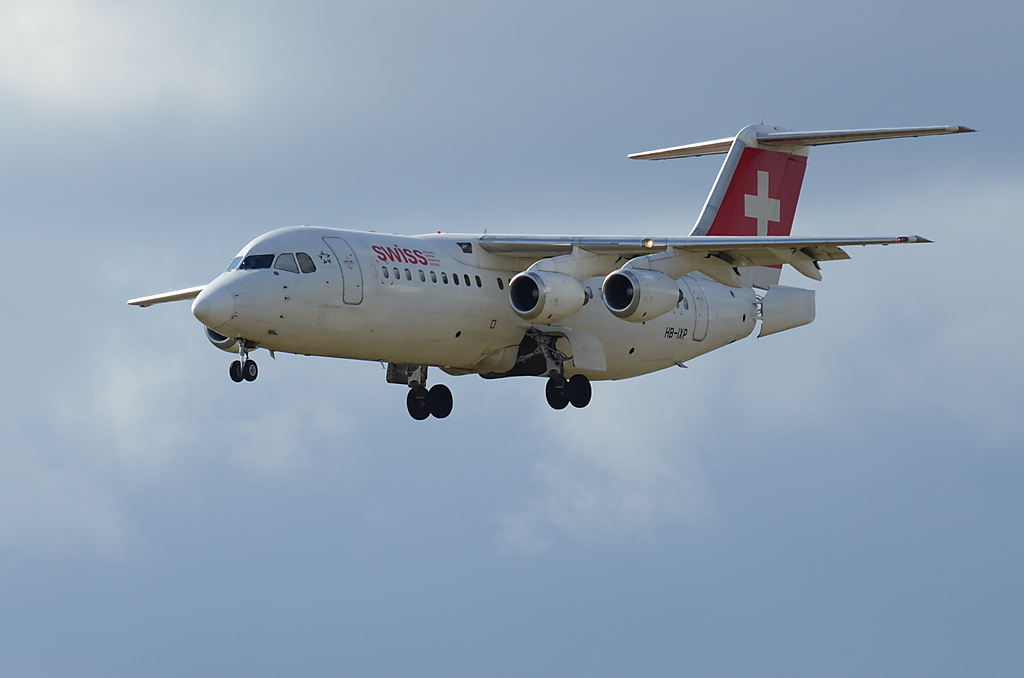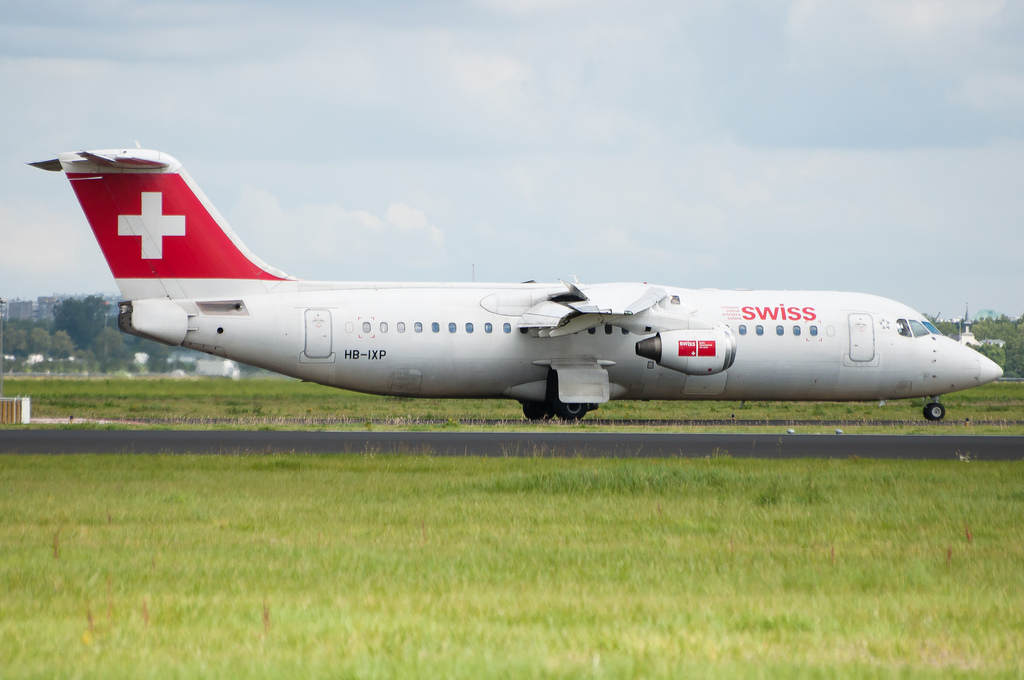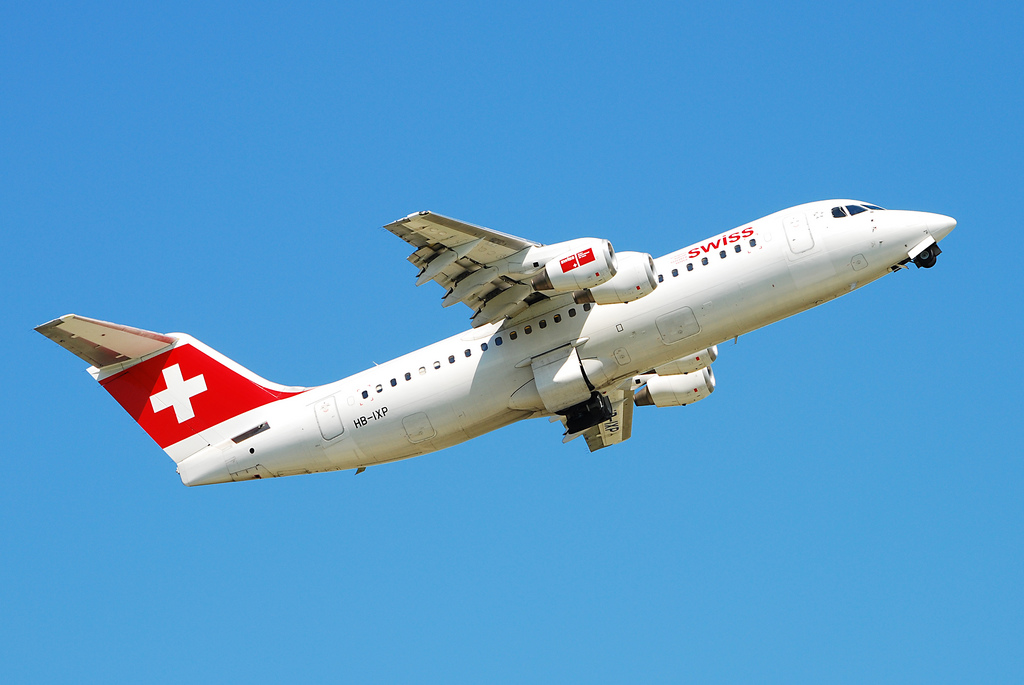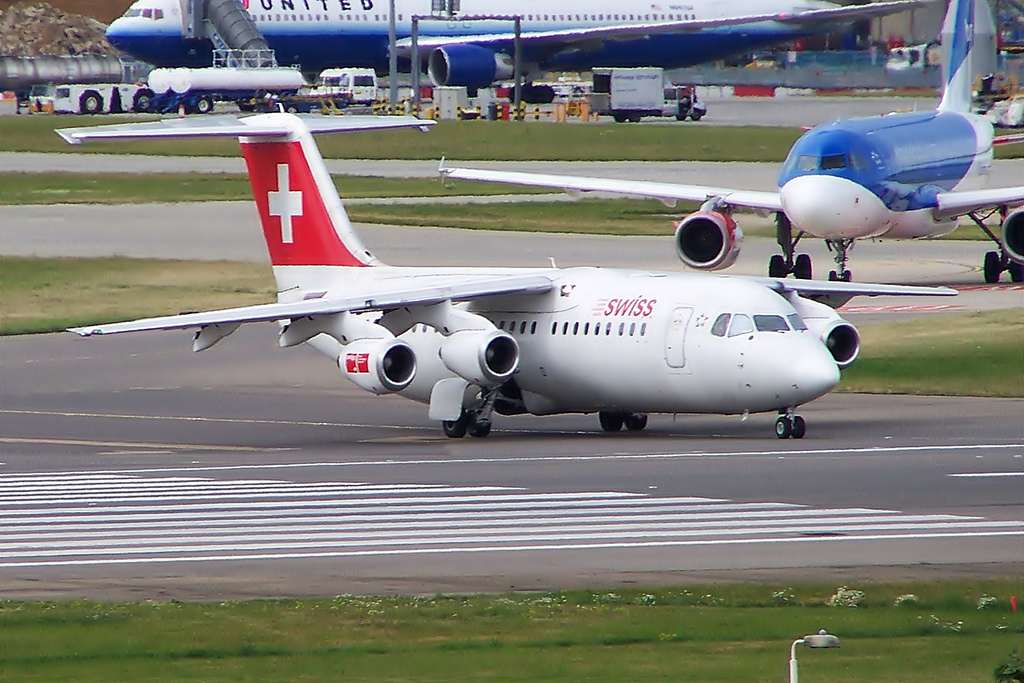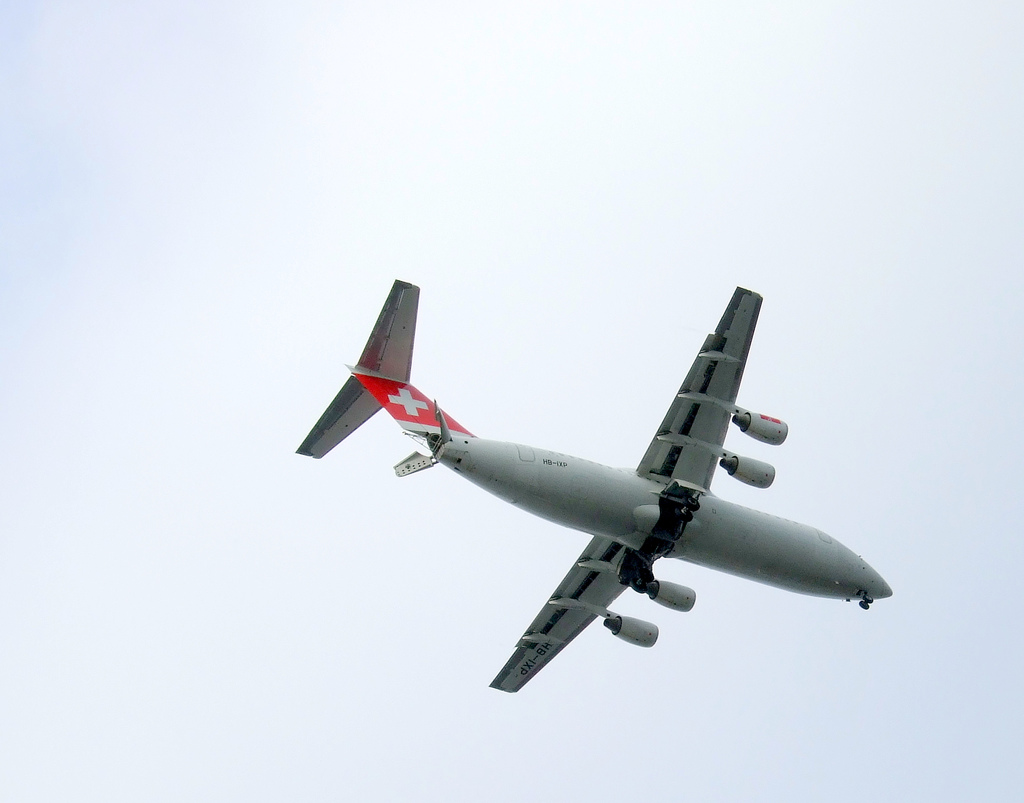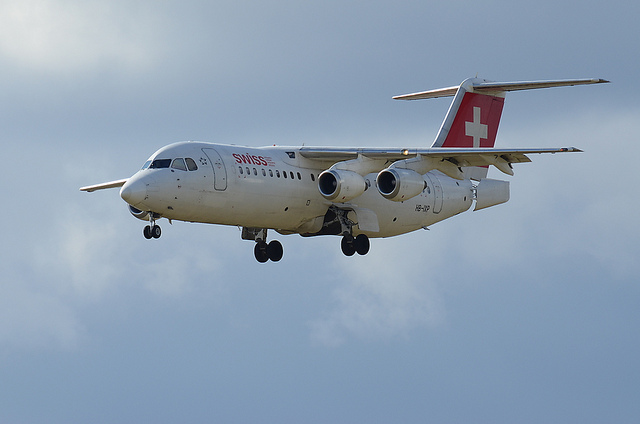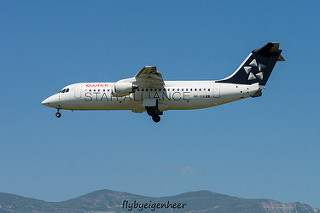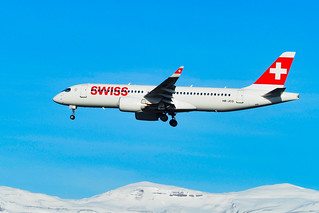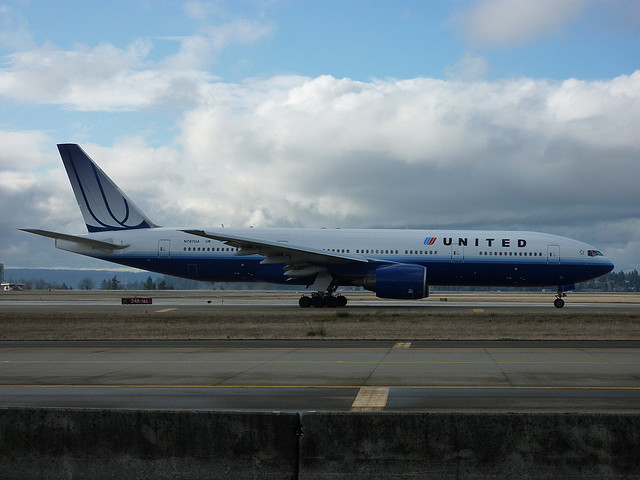Swiss RJ1H at Nuremberg and Zurich on Jul 20th 2011, single IRS malfunction prompts crew to disbelieve correct indications
Last Update: November 29, 2012 / 19:40:05 GMT/Zulu time
Incident Facts
Date of incident
Jul 20, 2011
Classification
Report
Airline
Swiss
Departure
Nuremberg, Germany
Destination
Zurich, Switzerland
Aircraft Registration
HB-IXP
Aircraft Type
AVRO RJ-100 Avroliner
ICAO Type Designator
RJ1H
Switzerland's Büro für Flugunfalluntersuchungen (BFU) released their final report concluding:
The serious incident is attributable to the fact that after the failure of a single system the crew did not use the remaining systems appropriately and safe control of the aircraft was at times no longer guaranteed.
The investigation identified the following factors which led to the serious incident:
- The crew had a fundamentally unfounded picture about the technical problem causing the system failure.
- After the loss of the autopilot, autothrottle and flight director, the copilot did not manage to continue to control the aircraft manually.
- The commander was able to fly the aircraft only to a limited extent with the aid of the standby instruments.
- Crew resource management (CRM) was unsatisfactory.
- The crew did not carry out a sufficient analysis of the situation.
- An exercise which had been practised in the simulator using standby instruments and raw data could only be partially implemented in the actual case.
The BFU reported that the aircraft had rejected takeoff at low speed (60 KIAS) on its scheduled passenger flight from Nuremberg to Zurich the previous day due to a hydraulic indication. Maintenance subsequently determined a hydraulic leak, replaced a seal and released the aircraft back to service the following morning. The airline decided for operational reasons that the aircraft would be positioned to Zurich that same day. During the night there had been heavy rain in Nuremberg, upon entering the aircraft for the positioning flight the crew noticed the floor at the aircraft entrance area was wet.
The operator stated that FGCs had often failed in such circumstances, the crews were aware of this issue.
Post flight analysis of memory of the FGC #2 showed the unit had recorded an Inertial Reference Unit #1 error during initial climb, the recordings indicated unstable readings of IRU #1 parameters. The recordings showed unstable readings of IRU #1 parameters re-occurred at the time of final approach. The IRU #1 was removed from the aircraft and sent to the manufacturer for extensive diagnosis, that did not reveal any anomalies until the "burn in" tests, used to test newly produced devices, were conducted. Three components showed faults in this test and were replaced.
On Jul 30th 2011 the same aircraft departed from Brussels to Zurich when at about 600 feet the first officer's primary flight display showed red flags for attitude and heading and the commander's compass rose on the distance bearing indicator began to continuously rotate. The crew attributed both faults to the IRS #2, selected the IRU to "BOTH 1" restoring normal instrument and automation function. Climbing through 2300 feet the captain's primary flight display began to show unstable vertical speed indications, the crew discontinued the flight reverting to raw data flying and returned to Brussels for a safe landing. Maintenance replaced both IRU units and the IRU control panel, the active FGC had recorded a IRU #2 failure as well as an IRU #1 fault on the vertical speed indication.
Following the flight of Jul 30th the IRU #2 was opened, all electronic boards were found heavily contaminated with dust and water. Several printed circuit boards had to be replaced. The laser gyro of IRU #1 was replaced.
The BFU analysed: "An analysis of recorded data found that the failure of the FD and the AT was caused by the inertial reference unit (IRU) 1, which was generating unstable data. A few seconds later the data normalised again, which was the reason why the AP, FD and AT could be reengaged without any problems. It should be noted that in these circumstances the failure of the FD and the AT would have happened after the take-off even if the FGC 1 had been selected from the beginning, because both FGC receive data from both IRS. If one of the two IRS generates unstable data or if one IRS fails completely, the AT, FD and AP (if engaged) fail, regardless of the selected FGC."
The data generator by IRU#1 remained unstable throughout the flight however the fluctuations were below the margin required to trigger the signal comparator. The difference thus was not detectable by the crew. When the captain switched to FGC #2 again no change was detected and the crew decided to continue use FGC #2.
Upon turning final the IRU #1 bank angle data became unstable again beyond the threshold triggering the signal comparator. The immediate switch to FGC #1 thus could not result in any improvement. The erratic bank angle data produced by IRU #1 subsequently produced false bank angle warnings with unstable and incorrect bank angles shown on the captain's primary flight display, while correct data were displayed on both the first officer's and the stand by instruments.
After switching the IRU to "BOTH 2" both captain's and first officer's instruments were supplied by IRU #2, the indications returned to normal and the automation systems (flight director, autopilot, autothrottle) could be re-engaged.
The BFU analysed: "It seems, according to the statements of the crew, to be general knowledge within the operator that after take-off the AP, AT, and FD may fail if the aircraft has been exposed to heavy rain on the ground for some time with the cabin door open, as was applicable in this case. The crews are therefore of the opinion that switching the FGC generally resolves the problem. Remarkably, the crew connected the observed failures with the heavy rain which had prevailed before take-off in Nuremberg. They referred to the problems described in a technical information (EORT Info dated 22.12.2009). This technical information does indeed describe the failure of AP, AT and FD, as well as other systems, but refers to defective temperature measurement by the air data systems, not the influence of moisture or water (cf. Annex 4). The present case, however, permits the conclusion that high humidity and the ingress of water into the IRUs cause these to generate unstable data. This may occur for only a short time and does not necessarily lead to a total failure of the IRUs. However, regardless of the selected FGC the unstable data leads to a failure of AP, AT and FD, as occurred immediately after take-off from Nuremberg."
The BFU further analysed that following the failure of automation during initial climb, selection of FGC #1 and return of normal function of all systems the crew was convinced they had solved the problem. The fact, that IRU #1 was causing the anomaly, thus could not be known by the crew.
The BFU analysed: "The acoustic "bank angle" warning caused by the IRU 1 confused the copilot and he looked at the commanderÂ’s instruments, which because of the fault which had occurred showed a bank angle which corresponded with the acoustic warning. According to his statement, the PFD on his side showed "wings level" i.e. no bank angle. Now he no longer trusted his own instruments. A comparison with the standby instruments would have shown the crew that their indications corresponded with the display on the PFD on the copilot's side. Hence all the necessary data was available to fly the aircraft manually on the ILS using raw data (cf. chapter 2.1.2, figure 2). Even a landing would have been possible given the prevailing weather conditions. The flying situation was basically comparable to that which the copilot had experienced on the occasion of the refresher in the year 2010 (cf. chapter 1.17.4). The fact that the copilot did not make a consistent comparison of the available attitude indications led to a partial loss of situational awareness. This uncertainty meant that the copilot experienced difficulty in controlling the aircraft manually and was subsequently able to support the commander only inadequately. Too little correction was applied for the strong westerly wind and the aircraft drifted away to the east from the ILS localizer. The recorded altitude of this flight phase testifies to a changeable and unstable pitch attitude (cf. Annex 2)."
The BFU analysed that an analysis of the situation had not been done by either of the crew, otherwise it should have been clear that the first officer's instruments were working normally. The BFU acknowledged however that the commander, flying stand by instruments while retracting flaps and doing radio communication, was overwhelmed with the work load and thus did not have the capacity to even remember common knowledge like the distance bearing indicator's heading indications being supplied cross wise (IRU #1 supplies the first officer, IRU #2 the captain's instrument in normal configuration). The BFU summarised: "Notably, the commander reported to the air traffic control officer shortly afterwards that the crew did not have any heading information of any kind. In actual fact, at this time a correct heading was being displayed on the commander's distance bearing indicator (DBI) (cf. chapter 2.1.2, figure 1). The copilot also had a valid heading indication on his EFIS displays. The fact that the crew were not aware of these clearly available displays indicates how confused they must have been at this time."
The BFU concluded the analysis of crew performance: "The crew then flew for some seven minutes on the assumption that they had no heading information. The statements of the crew and the analysis of the radio communications allow the conclusion that in this phase the commander was getting hardly any support from the copilot. Even though the CVR (cockpit voice recorder) was overwritten and the conversations in the cockpit were therefore not available to the investigation, it can be concluded from the above-mentioned sources that the crew cooperation was deficient, which meant that the failure of a single system could be overcome only with considerable problems."
The BFU remarked that both flight crew had passed simulator exercises of raw data flying (e.g. on stand by instruments) with good and very good assessment, however completely failed to show such performance during the incident flight. The BFU analysed: "The difference in the work of the crew during simulator exercises and their performance in the serious incident is considerable. The reason for this discrepancy is that in simulator exercises crews are prepared in detail for the faults that occur, and these are expected. The effect of surprise, as was present in the serious incident, is largely missing. In principle, this applies to all crews. The question therefore arises as to how recurrent training can be better designed so that what is practised in the simulator can be effectively implemented in a real situation."
The BFU concluded the analysis stating that air traffic control supported the crew optimally and thus contributed to a safe outcome of the flight.
Aircraft Registration Data
Incident Facts
Date of incident
Jul 20, 2011
Classification
Report
Airline
Swiss
Departure
Nuremberg, Germany
Destination
Zurich, Switzerland
Aircraft Registration
HB-IXP
Aircraft Type
AVRO RJ-100 Avroliner
ICAO Type Designator
RJ1H
This article is published under license from Avherald.com. © of text by Avherald.com.
Article source
You can read 2 more free articles without a subscription.
Subscribe now and continue reading without any limits!
Read unlimited articles and receive our daily update briefing. Gain better insights into what is happening in commercial aviation safety.
Send tip
Support AeroInside by sending a small tip amount.
Related articles
Swiss RJ1H at Geneva on Oct 10th 2016, rejected takeoff due to oil fumes in cockpit
A Swiss Avro RJ-100, registration HB-IXP performing flight LX-446 from Geneva (Switzerland) to London City,EN (UK) with 73 passengers and 5 crew, was…
Swiss RJ1H at Nuremberg on Oct 15th 2012, rejected takeoff
A Swiss Avro RJ-100, registration HB-IXP performing flight LX-1189 from Nuremberg (Germany) to Zurich (Switzerland), rejected takeoff from Nuremberg…
Swiss RJ1H enroute on Sep 3rd 2016, fumes in cockpit and cabin
A Swiss Global Airlines Avro RJ-100, registration HB-IYU performing flight LX-2813 from Geneva to Zurich (Switzerland) with 88 passengers and 4 crew,…
Swiss BCS3 near Zurich on Jul 24th 2022, loss of cabin pressure
A Swiss Bombardier C-Series CS-300, registration HB-JCG performing positioning flight LX-5141 from Ibiza,SP (Spain) to Zurich (Switzerland) with just…
Swiss BCS3 near Paris on Oct 15th 2019, engine shut down in flight after uncontained failure
A Swiss International Airlines Bombardier C-Series CS-300, registration HB-JCC performing flight LX-359 from London Heathrow,EN (UK) to Geneva…
Swiss BCS3 near Geneva on Sep 16th 2019, uncontained engine failure
A Swiss International Airlines Bombardier C-Series CS-300, registration HB-JCA performing flight LX-358 from Geneva to London Heathrow,EN (UK) with…
Swiss BCS1 near Geneva on Feb 22nd 2022, brakes problem
A Swiss Bombardier C-Series CS-100, registration HB-JBE performing flight LX-1082 from Geneva (Switzerland) to Frankfurt/Main (Germany), was enroute…
Newest articles
United B772 near Edmonton on Sep 8th 2025, electrical problems
A United Boeing 777-200, registration N787UA performing flight UA-927 from Frankfurt/Main (Germany) to San Francisco,CA (USA), was enroute at FL360…
Swift B738 at Basel on Sep 30th 2025, unstable go around
A Swift Air Boeing 737-800 on behalf of DHL, registration EC-IXE performing flight QY-4908 from Brussels (Belgium) to Basel/Mulhouse…
Subscribe today
Are you researching aviation incidents? Get access to AeroInside Insights, unlimited read access and receive the daily newsletter.
Pick your plan and subscribePartner

ELITE Simulation Solutions is a leading global provider of Flight Simulation Training Devices, IFR training software as well as flight controls and related services. Find out more.
SafetyScan Pro provides streamlined access to thousands of aviation accident reports. Tailored for your safety management efforts. Book your demo today
AeroInside Blog
Popular aircraft
Airbus A320Boeing 737-800
Boeing 737-800 MAX
Popular airlines
American AirlinesUnited
Delta
Air Canada
Lufthansa
British Airways
